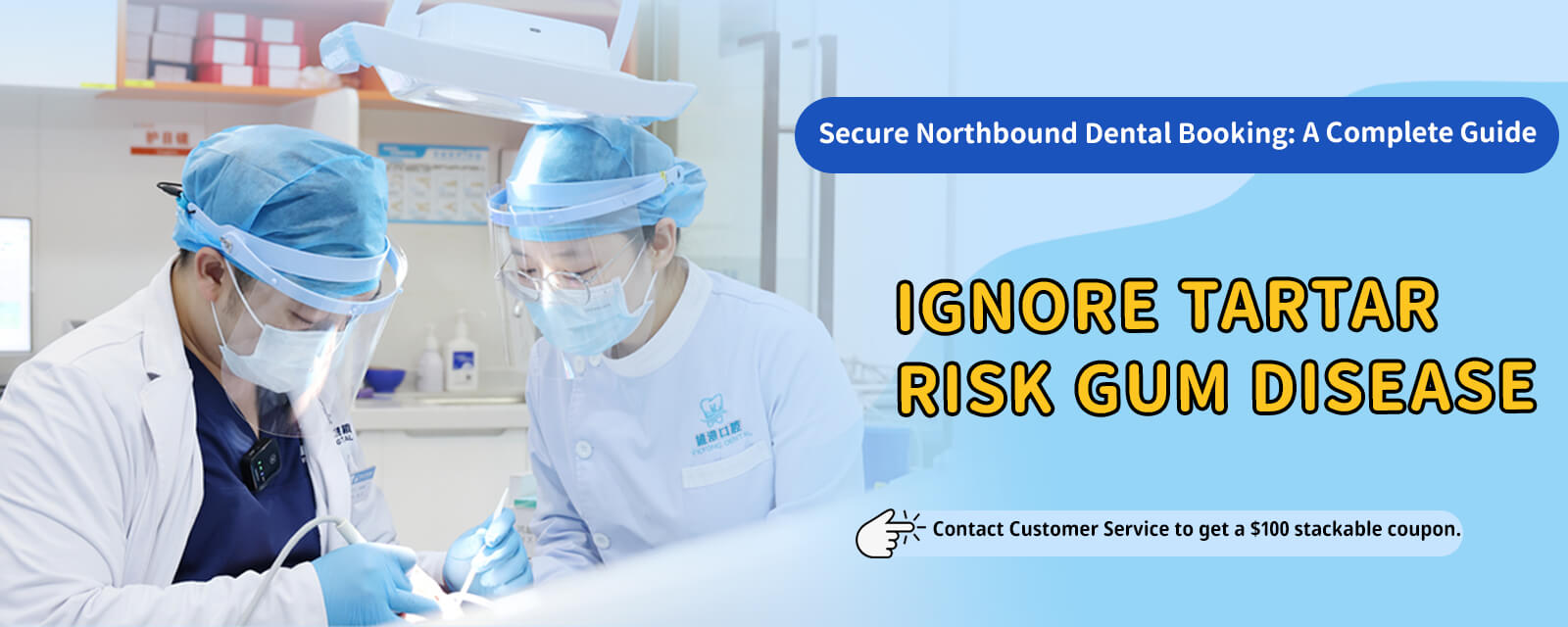What’s the difference between getting a dental cleaning in Mainland China and ultrasonic dental cleaning (ultrasonic scaling)
What’s the difference between going to Mainland China for a teeth cleaning and ultrasonic scaling?
In recent years, many people have considered crossing the border to Mainland China for professional teeth cleaning, and a common question is how that compares to “ultrasonic scaling.” In short, “going north for a cleaning” describes the location and overall service model, while “ultrasonic scaling” is a clinical technique. They can overlap—clinics in both Hong Kong and Mainland China may use ultrasonic scalers—but the experience, workflow, follow-up, and risk control can differ.
What is ultrasonic teeth cleaning?
Ultrasonic scaling uses a high-frequency vibrating tip with a water spray to break up calculus (tartar) and plaque, followed by polishing to smooth the tooth surface and reduce new buildup. When performed correctly, it shouldn’t damage enamel. If you have gum recession or exposed root surfaces, clinicians typically reduce power, switch to hand scaling, or use air polishing to protect sensitive areas.
What does “going north for a cleaning” mean?
It generally refers to crossing the border to Mainland Chinese cities for a dental cleaning. Technically, many clinics there also use ultrasonic scalers, and may add hand scaling, air polishing, polishing pastes, and fluoride varnish. The real differences often lie in equipment standards, sterilization protocols, consultation workflows, communication, and aftercare arrangements.
Key differences to consider
- Technology and equipment: Both Hong Kong and Mainland China commonly use ultrasonic scalers; brands, tip shapes, and the “feel” of vibration can differ. Management of sensitive teeth may vary by clinic and clinician.
- Sterilization and hygiene: Look for autoclave (high-temperature, high-pressure) sterilization, single-use tip sleeves/saliva ejectors, and individually sealed instrument packs. These directly impact cross-infection risk. Larger groups often display their protocols clearly; smaller clinics can be excellent too—don’t hesitate to ask.
- Assessment workflow: Ideally, a cleaning starts with periodontal charting, gum health evaluation, and X-rays when needed, to define the scope of cleaning. Some places focus mainly on surface stain removal, which may be insufficient if you have signs of gum disease and actually need deep cleaning (scaling and root planing, SRP).
- Communication and records: Cantonese communication is usually fine, but terminology and aftercare instructions may differ slightly. Ask for receipts, treatment notes, and X-rays so you can follow up easily in Hong Kong.
- Comfort and pain control: Sensations depend on vibration, water temperature, and tartar location. If needed, ask whether topical or local anesthesia is available. For sensitive teeth, reques

t warm water, lower power settings, or cleaning in stages.
- Follow-up and convenience: You may need one or t

wo review visits to check gum healing. Cross-border travel adds time and cost; for acute gum swelling or pain, immediate care may be more convenient locally in Hong Kong.
- Safeguards and complaints: Regulatory frameworks and complaint channels differ by region. Before you book, understand what mechanisms and contacts are in place.
Who is suitable for ultrasonic scaling? What are the risks?
- Most people are good candidates. Teeth cleaning is generally safe in the second trimester of pregnancy; if X-rays are suggested, discuss with your clinician first.
- If you have a cardiac pacemaker, have had recent major surgery, or have severe periodontal disease, consult your dentist/physician. You may need specific modes, precautions, or closer monitoring.
- Around braces, bridges, and implants, extra care is required to avoid scratching components or irritating the gums.
- Minor gum bleeding and tenderness after cleaning are common and usually improve within a day or two. If swelling or bleeding persists, arrange a prompt review.
Teeth cleaning procedure and practical tips
- Oral exam first: Medical history, periodontal charting, and assessment of tartar distribution.
- Main cleaning: Ultrasonic scaling to remove calculus, with hand instruments as needed.
- Polishing or air polishing: Removes surface stains and leaves teeth smoother.
- Fluoride treatment: Helps reduce sensitivity and strengthens resistance to acid erosion.
- Home care: On the day, try to avoid coffee, red wine, and dark tea. For the next 2–3 days, step up flossing/interdental brushing, brush gently, and use a desensitizing toothpaste if you’re prone to sensitivity.
- Recall interval: Generally every 6–12 months; smokers or people with periodontal risk may need every 3–6 months.
How to choose what’s right for you
- Check credentials: Understand the dentist’s background, the clinic’s sterilization procedures, and instrument maintenance.
- Clarify the workflow: Will there be a periodontal assessment, polishing, and fluoride? Don’t chase speed—quality and thoroughness matter more.
- Ensure clear communication: You should feel comfortable asking questions and receiving clear explanations.
- Consider follow-up: Can you return for reviews on time? If sensitivity or gum issues arise, is there a quick contact or urgent pathway?
- Review feedback wisely: Read reviews from multiple sources, prioritizing professional protocols and transparency over marketing claims.
Bottom line
“Going north for a cleaning” and “ultrasonic scaling” aren’t mutually exclusive. The meaningful comparison lies in clinical standards, sterilization, examination and treatment workflow, and aftercare. Wherever you go, prioritize safety, professionalism, and a plan that fits your oral health. Do your research, communicate with your dentist, and follow up as advised to enjoy a cleaner, healthier smile with confidence.




